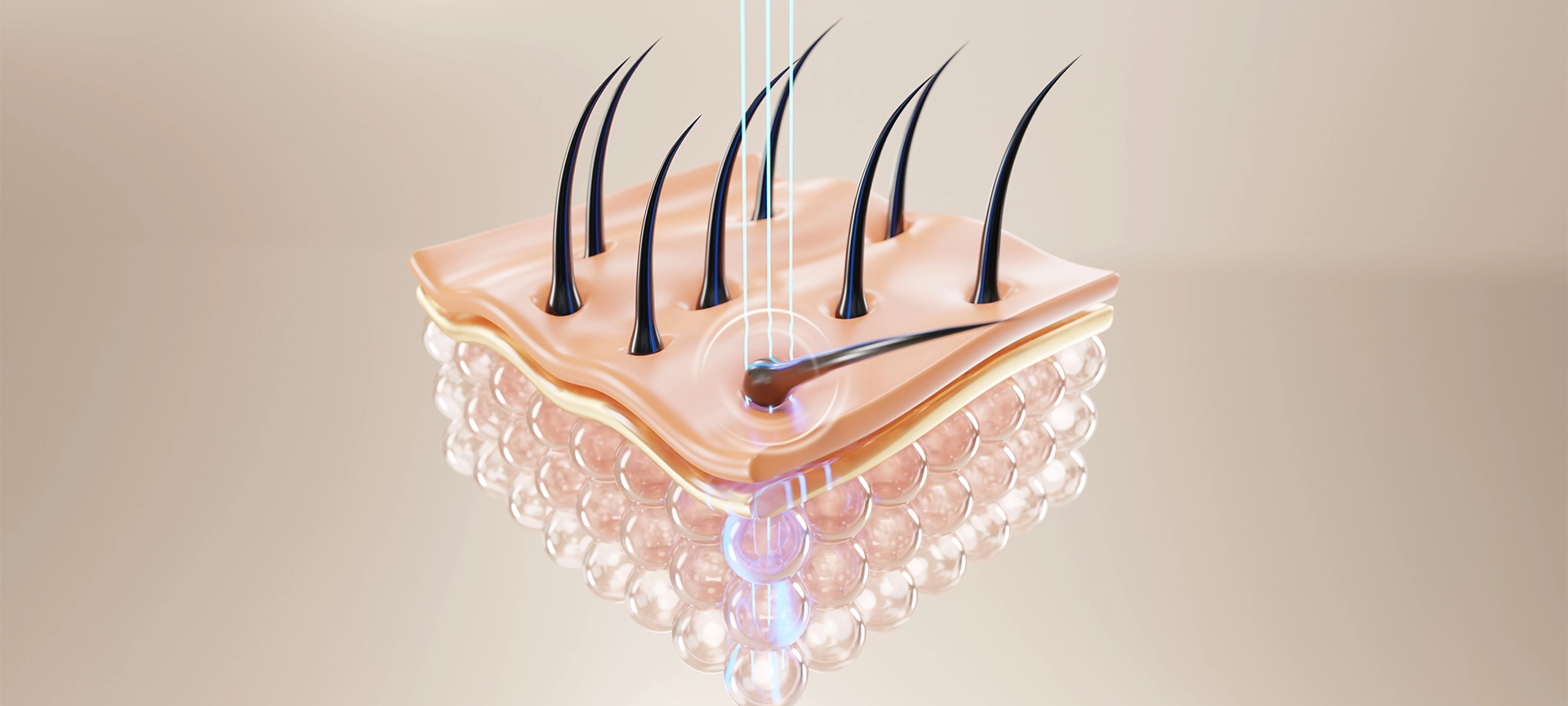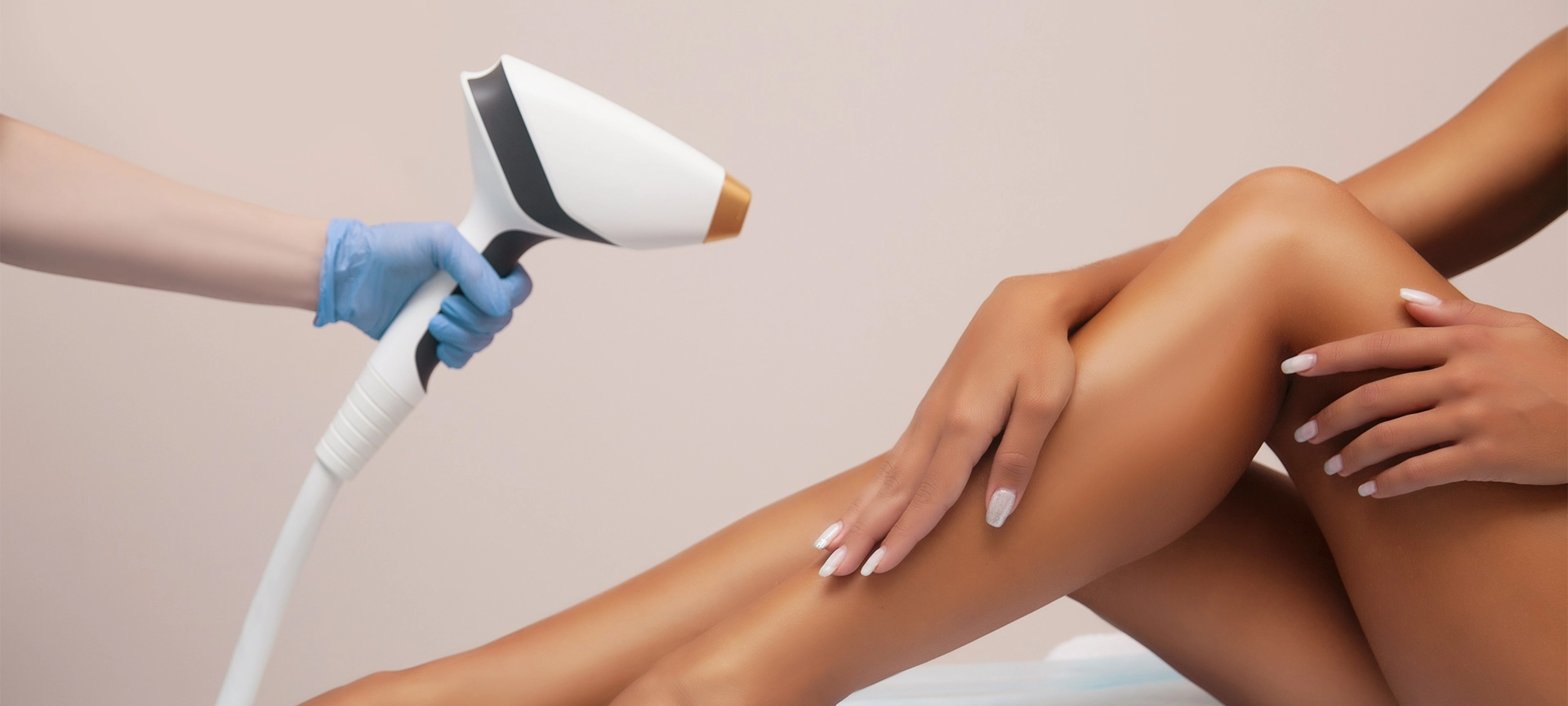
Laser Hair Removal and Sun Exposure: What You Need to Know Before Booking
Laser hair removal is one of the most effective ways to reduce unwanted body and facial hair. But if you’re planning to book your session during the sunnier months or have a tan, you need to be extra careful. Sun exposure before and after treatment can affect not just your results, but your safety.
At Rejuvenation Med Clinic, we prioritize patient education as much as results. If you’re considering laser hair removal, here’s everything you need to know about sun exposure and why timing matters.
Related Article: How to Prep for Your Laser Hair Removal Session
Why Sun Exposure Matters with Laser Hair Removal
Laser hair removal works by targeting pigment (melanin) in the hair follicle. The laser’s energy heats and damages the follicle to prevent future hair growth. This process relies on the contrast between your skin tone and hair colour.
When your skin is sun-exposed or tanned, its melanin levels increase. That added pigment can confuse the laser, causing it to target your skin instead of the hair. The result? Increased risk of burns, blistering, pigmentation issues, and compromised results.
Before Your Session: Avoid the Sun
How long should you stay out of the sun?
To reduce the risk of complications, you should avoid direct sun exposure for at least 2 weeks before your laser hair removal appointment. This includes tanning beds and self-tanning lotions.
Even light sun exposure can elevate melanin levels, especially in sensitive areas like the face, underarms, and bikini line.
What Happens If You’re Tanned?
Tanned skin, even from incidental sun exposure, can lead to:
- Skin burns or scabbing after treatment
- Hyperpigmentation (dark spots)
- Hypopigmentation (light patches)
- Less effective hair reduction
If your skin is recently tanned, your technician may recommend postponing the treatment to avoid complications.
After Your Session: Post-Treatment Sun Protection
Your skin will be more sensitive after a laser session, especially in the treated area. It may feel warm or appear red for 24–48 hours. During this time, sun exposure can lead to long-term pigmentation changes and irritation.
Post-Treatment Guidelines
- Avoid direct sunlight for at least 2 weeks post-treatment
- Wear broad-spectrum SPF 30+ daily
- Cover treated areas with clothing or a hat
- Avoid swimming or hot tubs for 24–48 hours
Sun protection is especially important for areas like the face, chest, and arms, which are harder to keep covered.
Related Article: How Many Sessions for Laser Hair removal? Detailed Guide

What If You Have an Active Lifestyle?
We understand many of our clients enjoy hiking, traveling, and outdoor activities, especially during the summer months. But staying active and getting laser hair removal aren’t mutually exclusive. You just need to be strategic about your timing and follow specific skin care protocols before and after each session.
Here’s how to make it work:
- Book treatments in the fall or winter: These are the best seasons to start your laser series since sun exposure is naturally lower and you’re more likely to be covered up.
- Schedule treatments around travel plans: If you’re heading somewhere sunny, plan your laser sessions at least 2–3 weeks before departure and resume them after your return, once your tan has faded.
- Use daily sun protection: If you can’t avoid the sun, protect your skin with SPF 30+ and UV-protective clothing.
- Be honest about sun exposure: Even if your skin doesn’t look visibly tan, UV exposure can still affect your treatment safety. Always tell your technician if you’ve been in the sun.
Our team is happy to personalize your treatment calendar so you can stay active and still get the results you want safely.
Ideal Skin Tones and Laser Hair Removal
Laser hair removal used to be most effective only for people with light skin and dark hair, because the contrast made it easier for the laser to target the pigment in hair follicles. However, modern laser technology now makes it possible to safely and effectively treat a much broader range of skin tones and hair types.
We use advanced medical-grade laser systems that allow for customization of settings such as wavelength, pulse duration, and intensity. This means we can tailor treatments for individuals with both lighter and darker skin tones while minimizing risks.
Fitzpatrick Skin Types
This scale measures how skin responds to sun exposure and helps determine the safest and most effective laser settings for your skin type:
- Type I–III: Fair to light tan skin. These skin types typically respond best to laser hair removal and carry a lower risk of pigmentation issues, provided sun exposure is minimized.
- Type IV–VI: Medium to deep brown or black skin. These skin types can be safely treated with specific laser wavelengths designed to bypass the melanin in the skin and target the hair root directly.
For all skin tones, it’s critical to avoid sun exposure before and after treatment to reduce the risk of burns and hyperpigmentation. Patient preparation, like using SPF daily and avoiding tanning, is just as important as the technology itself.
Can You Use Sunscreen Before Laser Hair Removal?
Yes, but with care and timing. Sunscreen is one of your best defenses against sun damage and hyperpigmentation, especially when undergoing laser treatments. However, not all sunscreens are created equal—and applying the wrong type too close to your session can interfere with the laser or irritate sensitive skin.
Use a broad-spectrum SPF 30 or higher daily in the 1–2 weeks leading up to your appointment, particularly on areas to be treated. Mineral-based sunscreens (with zinc oxide or titanium dioxide) are typically gentler and less likely to cause irritation.
On the Day of Your Appointment:
- Cleanse your skin thoroughly before arrival
- Do not apply sunscreen, lotion, or makeup to the treatment area
- Avoid using products that contain fragrances, oils, or alcohols beforehand
- After your session, apply sunscreen once the skin has cooled—especially if you need to be outside
Consistent sun protection before and after laser hair removal plays a key role in minimizing side effects and maintaining smooth, even-toned skin.
Related Article: How Long Does Laser Hair Removal Last?
What Happens If You Ignore These Guidelines?
Skipping sun precautions may seem harmless—but here’s what can happen:
- Burns or blistering that cause scarring
- Pigmentation changes that may take months to fade
- Increased pain during treatment due to inflamed skin
- Cancelled or rescheduled sessions, delaying results
At Rejuvenation Med Clinic, we want your treatment to go smoothly. That’s why we screen for recent sun exposure and advise clients to be honest during their pre-treatment assessment.

Laser Hair Removal and Tanning Beds
Tanning beds are a definite no-go before laser hair removal. They artificially boost melanin levels and dehydrate the skin, making it more prone to injury.
If you’ve recently used a tanning bed:
- Wait at least 2–3 weeks before laser treatment
- Moisturize daily to restore skin health
- Avoid further exposure during your laser hair removal course
The same caution applies to sunless tanners like sprays and lotions. These products temporarily stain the skin, and the laser may mistake this colour for pigment.
How to Prepare for Your Appointment
Here’s how to get the most out of each session:
- Shave the treatment area 12–24 hours in advance
- Do not wax or pluck for at least 4 weeks before
- Avoid exfoliants or peels for 7–10 days prior
- Inform us about any medication or health conditions
We’ll review everything during your consultation so your skin is fully prepped.
Smooth Results Start with Smart Sun Care
Laser hair removal can deliver long-lasting results—but only when your skin is prepped and protected. Sun exposure, whether before or after treatment, increases the risk of complications and can limit your results. By following these sun safety guidelines, you’re investing in a smoother, safer outcome.
Thinking of booking a session? Let Rejuvenation Med Clinic help you get the timing right. Contact us today for a consultation tailored to your skin and lifestyle.







